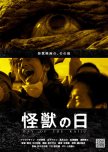
Proto-Shin
If you enjoyed the boardroom meetings of Shin Godzilla, then Day of the Kaiju will serve as a perfect little companion piece to that film, a very bold and lower-budgeted precursor. It tackles very similar themes to that of Shin Godzilla, offering both a serious look at the political hurdles that would be involved with dealing with giant lifeforms and sharp allegorical rebukes toward the Japanese government's handling of the Fukushima Nuclear Disaster. One only needs to look at Kazuhiro Nakagawa's directing credentials and the film's wonderful direction starts to make sense. The acting is all solid and the minimal VFX is handled very well given the minuscule budget, accompanied by a very understated and wonderful piano score by Masaaki Sasaki, it's just a well-done short that I have next to no criticisms of, exceptionally solid if too short. All in all, Day of the Kaiju comes down to being a foundation piece for a much more expanded take on its premise, I could easily have seen this being expanded out into a TV show. If nothing else, it does highlight my waning love towards Shin Godzilla.Was this review helpful to you?
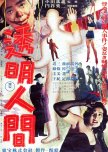
You can't try to see something that's invisible.
The second of three Japanese-made Invisible Man films, this time by Toho studios and much more overt in terms of leaning into post-war trauma than Daiei's The Invisible Man Appears. Unlike that film, Toho's production puts the trauma of its characters front and centre with the whole invisibility angle not actually turning up until about halfway through.In Ginza, the dead body of an invisible man is discovered, alongside a suicide note. The note reveals that there is at least one other invisible man still alive. An ex-army commander reveals that during the war, Dr Nishizaki discovered by chance a particle that, when properly utilized, turns any object invisible. At the end of the Pacific War, a special attack corps made up of invisible men crashed on Saipan Island and were presumed dead, however, two survived. The effects of the invisibility particle cannot be undone.
Another very loose adaptation of the original story, this Invisible Man is far less a deranged killer than some adaptations have made him out to be and is much more focused on a sympathetic portrayal of its titular character. The Invisible Man of this film is much more focused on dismantling an organised crime syndicate that dresses up as the iconic image of the said character in order to commit crimes.
This is the only other film I've seen from Motoyoshi Oda outside of the two edits of Godzilla Raids Again. It's certainly a very moody film and like Raids Again, Oda's direction is solid and made a lot better here thanks to some pretty great editing. There are some great set pieces and a very consistent tone throughout the film and of course, there's Oda's patented car chase by the end. The special effects sequences from Eiji Tsuburaya are very clever but sparingly used, so there's a lot of pressure from the actors to be extremely good at miming which they thankfully fully commit to.
The plot is admittedly very messy in places and can even be almost incomprehensible at times, where this film does triumph however is in its characters. Seizaburo Kawazu as Takamitsu Nanjo, the film's Invisible Man is a tragic character, who was turned invisible against his will in order to help provide the funds to give his mother care, he finds new motivation in order to help a little blind girl finally regain her sight. Like with Godzilla Raids Again, it's wonderful to see Yoshio Tsuchiya in something other than a villainous role, here as Komatsu he assists in uncovering the major connections that link the criminal gangs together as an active driving force behind the plot. The rest of the cast is all pretty good.
Overall, Toho's adaptation of The Invisible Man is another solid little affair, once again less focused on the horror of the original and more focused on the science-fiction aspects of the production. You can see the later influence of their transforming human series starting their development here.
Was this review helpful to you?

Invisibility is no longer in the realm of impossibility.
The third and final Invisible Man film created by the Japanese, The Invisible Man vs. The Human Fly acts as a standalone sequel of sorts to Daiei's The Invisible Man Appears but you wouldn't know that from watching the film since it doesn't even acknowledge the film that came before.A series of ghastly murders are being committed. The one similarity in each of the murders is that a weird buzzing sound is always heard right before the murder occurs. Is the killer invisible or possibly some other incredible creature?
Like many of the B-movie tokusatsu adventures that would follow, The Invisible Man vs. The Human Fly brings the wartime trauma to the fore, implying that this bodily corruption is an extension of the spiritual corruption suffered by those who lived through the conflict.
The Invisible Man Appears had opted to minimise the threat of violence to emphasise the immoral criminality of casual gangsterdom, thuggish armed robbery and the obscenity of fighting over a shiny diamond necklace when so many were going hungry, but Human Fly opens with a murder which turns out to be one of six recent mysterious cases of unexplained violent death. The only clue the police can come up with is a matchbook, later realising that some of the victims had served during the war together.
Where the Invisible Man in Daiei's first film is used as a warning about the misuse of science and the rising inequalities of the complicated post-war economy. By the 1950s, he'd become a more sympathetic figure. For Daiei, he was now a force of order, an unambiguously good instrument of law enforcement and a guardian of justice. For Toho, he was the melancholy ghost of the middle-aged man who'd been transformed by militarist folly, and like the 1949 Invisible Man knew he could never change back. The Human Fly, meanwhile, was everything that was rotten in the current society - embittered, greedy and vengeful, an example of bad science for which there was no legitimate application.
The impressive effects work of Eiji Tsuburaya has been abandoned and while Tōru Matoba attempts to do the ideas created by Eiji justice, his creativity is extremely limited by his choices of shots. Although the sequence of the railway and train exploding is a bright spot in an otherwise underwhelming effort. There's very little screentime dedicated to the titular characters and they are mostly relegated to background roles while a substandard police procedural plays out in the foreground.
Mitsuo Murayama's direction is fine, the story is fine, the characters are fine, it's just all a big bag of fine. It's not a film that is by any means special like the last two, just insanely forgettable. The actors don't really commit to the insane plot and ideas the film wants to portray and it mostly comes across as half-arsed in places.
Overall, The Invisible Man vs. The Human Fly is an entertaining if forgettable romp in the world of tokusatsu, you can do so much better but equally, you could do so much worse.
Was this review helpful to you?
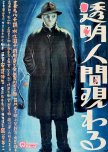
There is no good or evil in science, but it can be used for good or evil purposes.
The Invisible Man Appears holds the unique distinction of being the earliest surviving tokusatsu production and one of three Japanese-made films starring the titular character. It's a relatively unique and unusual production compared to the later tokusatsu films of the 50s and 60s where it remains entirely forward-looking, relegating the trauma of World War II to background context rather than primary motivation.Jewel thieves become interested in an invisibility formula invented by Professor Nakazato and want to use his invention to acquire a diamond necklace called the "Tears of Amour"...
Clearly taking influence from the exposure to American films during the Allied Occupation of Japan, The Invisible Man Appears is a very loose adaptation of the original Wells novel and appears to take cues from the more recent Universal movies being produced during the then more recent years of the 30s and 40s.
Less focused on murderous intent and instead, leaning into a far more wacky crime spree after a MacGuffin that symbolises post-war greed and selfishness. Astutely pro-science but wary of its misuse, the film develops a preoccupation with the role and responsibility of the scientific community as guardians of future safety.
I take my hat off to Arrow Video once again for managing to liberate these two Daiei classics from their vaults and finally giving them the attention they deserve outside of Japan. Unfortunately, the original film masters for this and its follow-up have long since vanished, a testament to their age, and what we are left with is a film cobbled together from surviving 16mm exhibition prints. There are all the artefacts to be expected with old celluloid; hairs, scratches, and authentic film jitter, but for anyone purchasing these old movies that should be expected and are unobtrusive.
Writer and director, Nobuo Adachi, delivers a fundamentally threadbare affair, the characters themselves are laughable in places. Seriously, these criminals have an Invisible Man at their disposable and all they can think to use him for is stealing a necklace, which they ultimately fail at numerous times. But it doesn't matter too much in the long run given that it nails the basics of being an entertaining cops and robbers film interspaced with a multitude of science fiction elements and a multitude of red herrings along the way.
His direction however is pretty good, there's a heavy noir atmosphere as actors deliver lines with slashes of light across their eyes, while simple actions such as the Invisible Man smashing glasses and pots on the floor are caught with whipping camera movements and canted angles. Clichés of the age, sure, but the darker ambience adds a much appreciated dramatic flair to accentuate the emotional beats.
This film also marks a very early credit for special effects wizard, Eiji Tsuburaya and while very rough in their execution, probably not helped by the so-so picture quality of the film prints, they showcase his talents right from the get-go making it no wonder that he would go on to be such a success in his field. He recreates many of the iconic moments that we've seen done to death in popular culture and yet with its film noir style they take on a very different feel and meaning.
Overall, The Invisible Man Appears is a solid interpretation of the character in an entirely new setting, some good acting, memorable direction and some very 'of the time' music help cement this film as the very definition of a hidden gem.
Was this review helpful to you?

Nowhere near as cool as it should be
A 55-minute hyperkinetic descent into electro-charged madness, Electric Dragon 80.000 V is a virtually plotless, overly-extended music video playing like a punk rock shock to the brain. Championing kinetic anarchy and raw aggression, the film's underground visual style with its high contrast black and white cinematography and bizarre imagery set to an overwhelming eardrum-shattering industrial noise soundtrack will certainly have its fans. I can't deny that the film is a wildly unique piece of eye candy, often with fast-cutting sequences filled with flashes of electricity and surging power within our characters, not to mention the wild guitar-playing sequences. Having that high contrast crisp monochrome look, Electric Dragon plays like a manga come to its fullest realisation, a visual and aural marvel, shot and edited with boundless energy and style, and yet I'm still left wanting more.Was this review helpful to you?
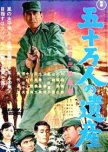
Mifune could direct, who knew?
Legacy of the 500,000 sees legendary actor Toshirō Mifune both in front and behind the camera for the first and only time in his career, taking elements from Joseph Conrad's Heart of Darkness and crafting a fun little treasure-hunting adventure with darker undertones. Mifune's level of technical prowess is genuinely remarkable and something he seems very passionate about, with plenty of impressive shots and making great use of being shot on location in the Philippines, it feels less like a big studio film and more like an independent B-movie. The performances from the entire cast are all solid, Mifune is the star so obviously gets the most screen time but it's time he happily shares alongside his co-stars. While the photography by Takao Saitō was genuinely lovely for the entire runtime, utilising the B&W Tohoscope format to great effect, choosing to transition between scenes with Flash Gordon / Star Wars-esque wipes was certainly a choice. Nipping along at a fast pace, Legacy of the 500,000 is a genuinely great and highly enjoyable little film, more than showing what Mifune was capable of had he chosen to spend just as much time behind the camera as he did in front of it and for that reason alone it's worth a watch.Was this review helpful to you?
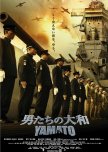
Tonally messy but otherwise great
While the main body of its story is at tonal odds with its framing device, Junya Satō's Yamato is an impressively made, often brutal exploration into the lives of those aboard Japan's most iconic warship during her final days at sea. Yamato oddly decides to use the Titanic and Saving Private Ryan storytelling formula, which is where this tonal contradiction stems from, it's at heart an anti-war film but the framing device dangerously treads the line of propaganda mode (the song at the end almost tipped it over the edge). However, Yamato manages to sail on unopposed, opening up discussion and criticism of such reckless leadership that led to such an abhorrent waste of life, a suicidal last defence. Satō's clean direction helps to highlight the outstanding production design, most of the budget having been spent on painstakingly recreating part of the titular ship on a 1:1 scale, the two complement each other exceptionally well. Joe Hisaishi's music isn't as memorable as some of his other efforts, it often feels like he's emulating a Hans Zimmer score, but it's an effective soundtrack nonetheless. Backed by great performances and a stunningly realised final battle, Yamato strategically uses the ruptures of trauma in an attempt to erase any inconsistencies, all the while reassuring its shocked audiences with a familiar, if conventional, film style.Was this review helpful to you?

All style
Gakuryû Ishii's Shuffle is mostly just a short exercise in style if nothing else. Often extremely hectic and practically headache-inducing, it lacks any form of narrative or characterisation, Shuffle instead concentrates on two intercutting and unfocused subplots that ultimately amount to very little. Adapted from the legendary Katsuhiro Otomo's short manga, Run, although Ishii never actually asked for permission until after the film had been shot, go figure. Granted, the exhaustingly long chase through the Japanese streets which make up the majority of the film is shot in wild, semi-abstract patterns so that you're never quite sure what you're seeing and backed by a repetitive if memorable industrial synth score. You can certainly feel the influence Ishii's punk stylings would have on more modern Japanese cinema but I just wish there was a bit more meat on Shuffle's bones to really make me fall in love with its underground grim.Was this review helpful to you?
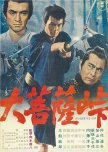
A paradoxical relationship
A painfully slow yet exceptionally captivating tale of a man who chooses to devote his life to evil and the madness that follows, The Sword of Doom is more often than not defined by its meticulously precise construction. Serving as the first part of an unfinished trilogy adapting the famously incomplete Great Bodhisattva Pass, The Sword of Doom was thrust upon Kihachi Okamoto by Toho, due to them being dissatisfied with his previous film. Here, Okamoto not only delivers a grand, sweeping epic crammed with beautiful shots and exceptional staging but also marks it out as an expression of rage, conditioning and stylish tension. Although I found the pacing glacially slow in comparison to his other works, it's Tatsuya Nakadai's stunning performance that incarnates perfectly the paradox at the heart of his character which makes for such engaging viewing that it wasn't a huge deal breaker for me. Clean yet brutal, The Sword of Doom makes for a remarkably vicious gesture of destructive essence, with unmistakable visual beauty inseparable from horror.Was this review helpful to you?

A Toho take on the Nikkatsu crime drama
The Last Gunfight benefits from being helmed by the immensely talented Kihachi Okamoto and his odd sense of humour. From Toshirō Mifune's fast-talking, no-nonsense, bitch slapping detective to mariachi-looking yakuza killers who sing at gentlemen's clubs in their off time, the film has an ample sense of style complete with a heavy jazz-infused score by Masaru Satō. While the film certainly has issues with its pacing and otherwise predictable story; the use of old film noir sensibilities, lovely use of colour and dynamic quick-cut action that marries with the more heavy cross-cutting editing, ultimately means that The Last Gunfight will more than satisfy many Okamoto fans looking for something a little bit different and a hell of lot more camp.Was this review helpful to you?
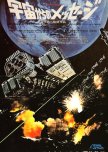
They don't call me kamikaze for nothing!
With Star Wars marking a turning point in cinematic blockbusters, it's only natural it would spawn countless imitators and knock-offs. I've taken a look at Toho's answer with The War in Space before and I thought it high time to take a look at Toei's attempt. Often unfairly slagged as a cheap rip-off of the previous year's Star Wars, Message from Space actually has way more going for it than what initially meets the eye.The peaceful planet of Jillucia has been nearly wiped out by the Gavanas, whose leader takes orders from his mother rather than the Emperor. King Kaiba sends out eight Liabe holy seeds, each to be received by a chosen one to defend the Gavanas. Each recipient, ranging from hardened General Garuda to Gavana Prince Hans to young Terrans Meia, Kido, and Aaron all have different reactions to being chosen.
Considering how much George Lucas lifted from Japanese culture and cinema for Star Wars, consider Message from Space a case of, ahem, striking back. In a narrative sense, the story is completely baffling and at times indecipherable, taking the core elements that makeup Star Wars' story but delivering it in a way that a viewer is left in a state of confusion. A white-clad princess on the run, an evil empire, armoured bad guy troopers, an obnoxious beeping droid, a trench run, a cantina, and spaceships flying in formation. There’s even a long shot of an enemy starship cruising into the frame. And while Darth Vader may have drawn visual inspiration from samurai, Message from Space has full-on space samurai as the villains.
Where this film shines, and boy it does shine, is in its incredible visual and production design. Given this was the most expensive Japanese film at the time, and yet was made for half the budget of Star Wars, it looks mighty impressive. Be it the gorgeous, elaborate sets and costumes or the highly detailed and genuinely incredible and increasingly complex miniature special effects work by Nobuo Yajima, the ethereal and dreamlike fantasy nature of the film is present from the encapsulating opening titles. The very literal "spaceships" are a real work of art and wouldn't be out of place from a Gerry Anderson production.
Given my love for Kinji Fukasaku's final film, Battle Royale, it's no wonder that I would love this as well. With the sweeping and evocative landscape shots, the gritty and intense yet easy-to-follow fight sequences, the expert choice of shots and thanks to regular collaborator Tôru Nakajima the film isn't without a bold use of colour from brilliant orange to deep blues, its most certainly a visual treat for the eyes.
The film's cast is populated by many faces you may recognise, be it the always reliable Vic Morrow or Sonny Chiba to a baby-faced Hiroyuki Sanada. There are hardly any complaints to be had on the talent front and they all perform the film well even if what is being delivered is a bit too much at times. The music by Ken-Ichiro Morioka is pretty good, there's plenty to love in its more fantastical elements and less synth-laden than you'd expect but it matches the visuals well and does a good job, lends itself to easy listening so maybe I'll give it another listen one day.
Overall, Message from Space is a very bold attempt at the Star Wars formula and makes up for its shortcomings with devil-may-care energy reminiscent of '40s-era serials. The Blu-ray set I bought comes with both the English version of the film, the spin-off show Galatic Wars and the compilation movie of that show, so I'm hardly done with Message from Space for a while yet.
Was this review helpful to you?
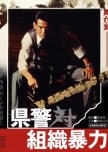
The title says it all
Even at the height of his popularity, Kinji Fukasaku never forgot what put him there in the first place, he can populate a frame like no one else and tackle an unflinching view of society with lines unclear and blurry. Cops vs. Thugs doesn't need a summary, its summary is its title. In Fukasaku's world, there's no honour among thieves or lawmen alike and the only thing that matters is personal honour and duty between friends. It plays like some of the great crime films of Sidney Lumet and Jean-Pierre Melville but with the fabulous additions of Kazuo Kasahara's shattering screenplay and Fukasaku's dynamic dedication to supporting an all-star ensemble cast of likeable undesirables with Bunta Sugawara once again leading from the front.Was this review helpful to you?

Goofy fun
Android Kikaider is another semi-run-of-the-mill 70s tokusatsu show from Shōtarō Ishinomori, the same mind who brought us the likes of Kamen Rider. While for the most part very monster of the week like early Shōwa era Ultraman episodes, it's in the last 7 episodes where it becomes exceptional as that is the introduction of Hakaider and where the show becomes worthy of its reputation. It's got its dated elements and isn't nearly as great in terms of production as some of Toei's other productions from that era, but it remains a solid show regardless. Also, shout out to Daisuke Ban who carries much of this show as the titular character.Was this review helpful to you?

Humble beginnings
Playing like a prototype to his later Battles Without Honor and Humanity series, Steet Mobster is a pivotal work in the yakuza movie genre and the career of director Kinji Fukasaku. Portraying an abrasive portrait of the rise and fall of a reckless street punk caught in the crossfire of a bloody turf war raging in the mean streets of Kawazaki, Bunta Sugawara's utterly unhinged performance combined with Fukasaku's incredible camera work makes this chaotic and disturbingly vile tale truly come to life.Was this review helpful to you?
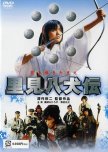
Fukasaku does Kurosawa
Although he's well-defined by his slew of Yakuza films, it's easy to forget that Kinji Fukasaku had an experimental phase like many others and Legend of the Eight Samurai came at the height of that phase. A bold fantasy epic, taking cues from Kurosawa's samurai movies, it mixes classical imagery with the stuff of nightmares, martial arts, beautiful music, giant bug monsters, Fukasaku's hyper-kinetic camera work and potency for bloody violence into a movie about friendship, good vs evil and a woman's quest for identity in not being defined by her lineage.Was this review helpful to you?





